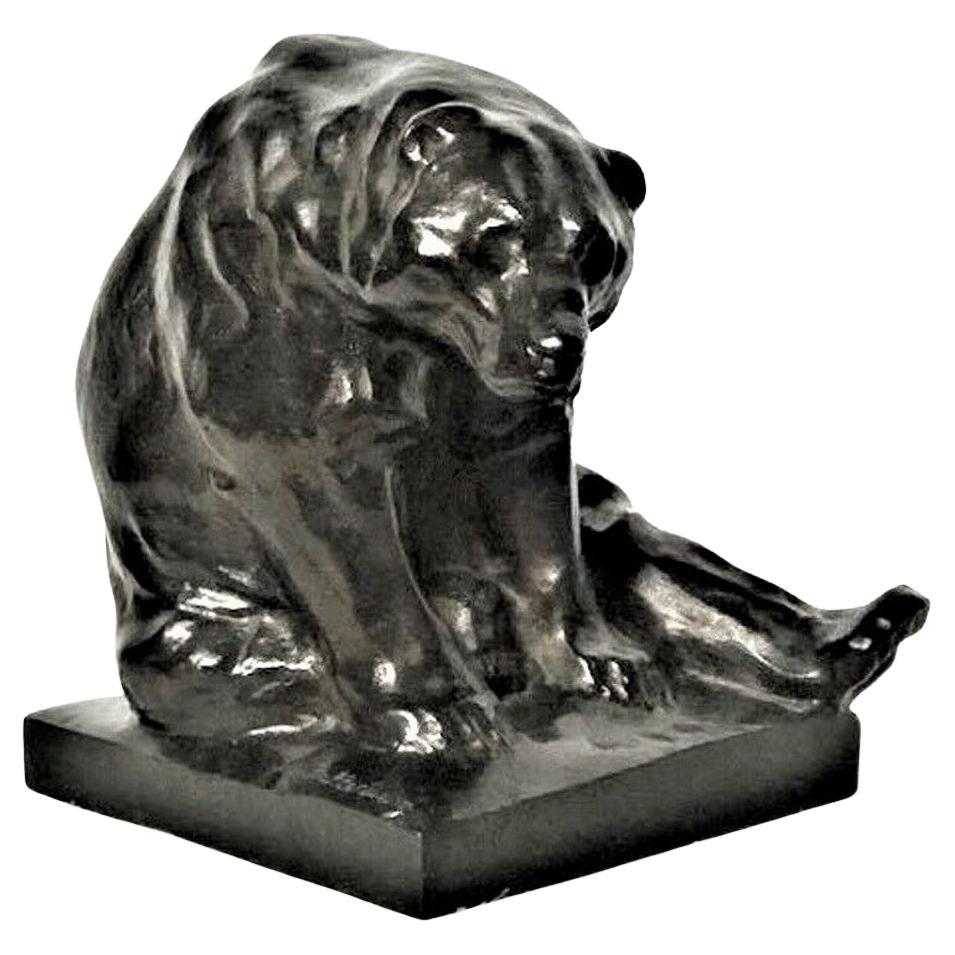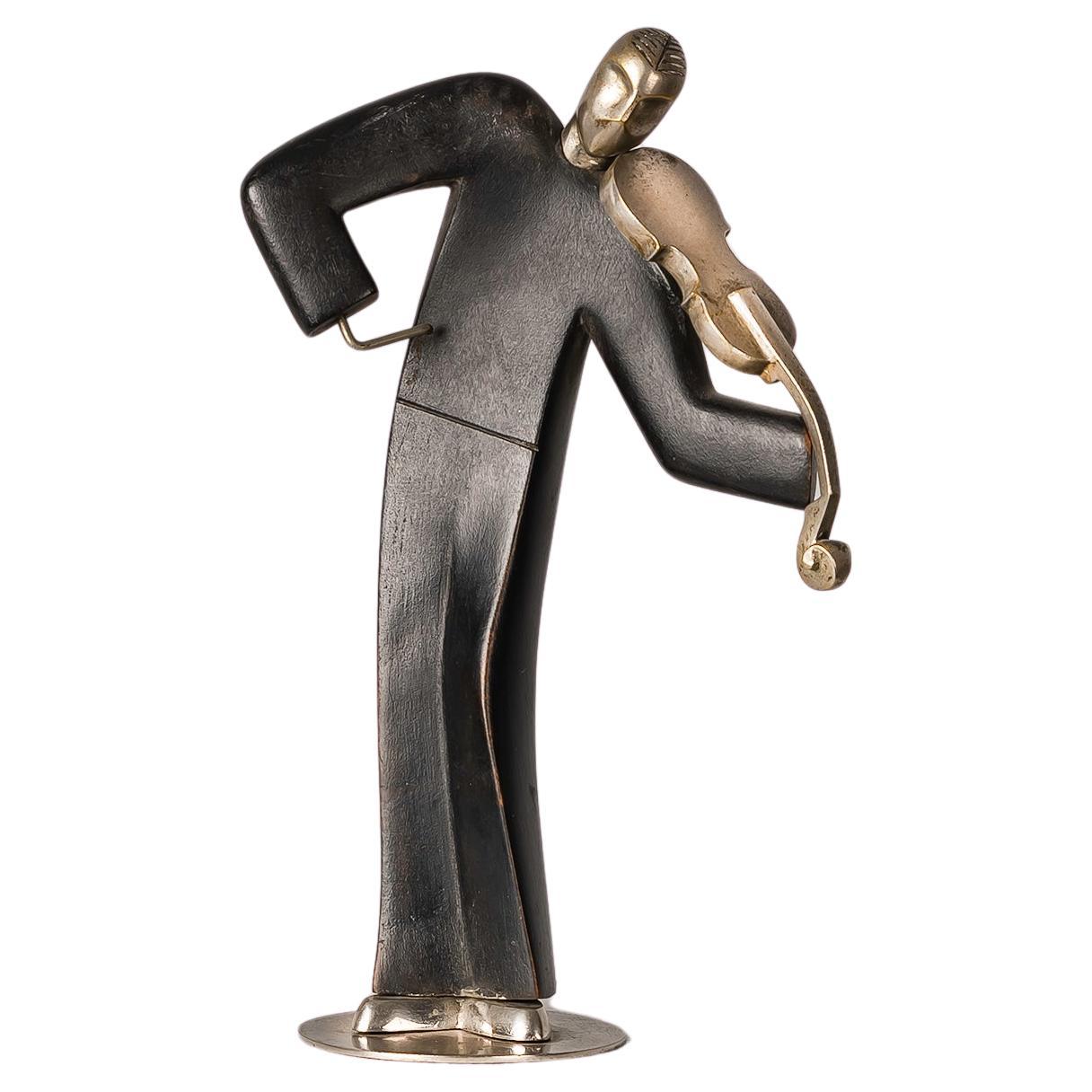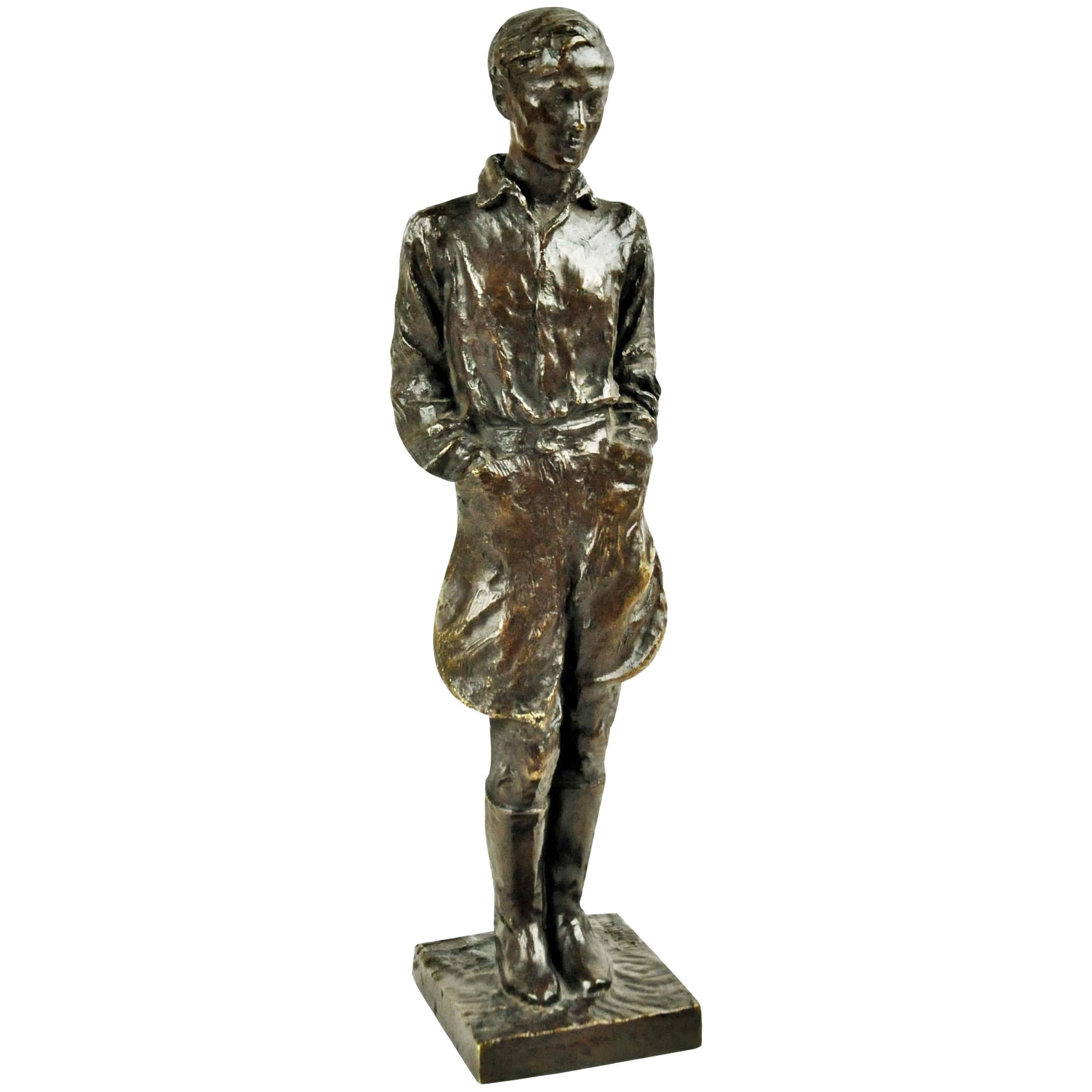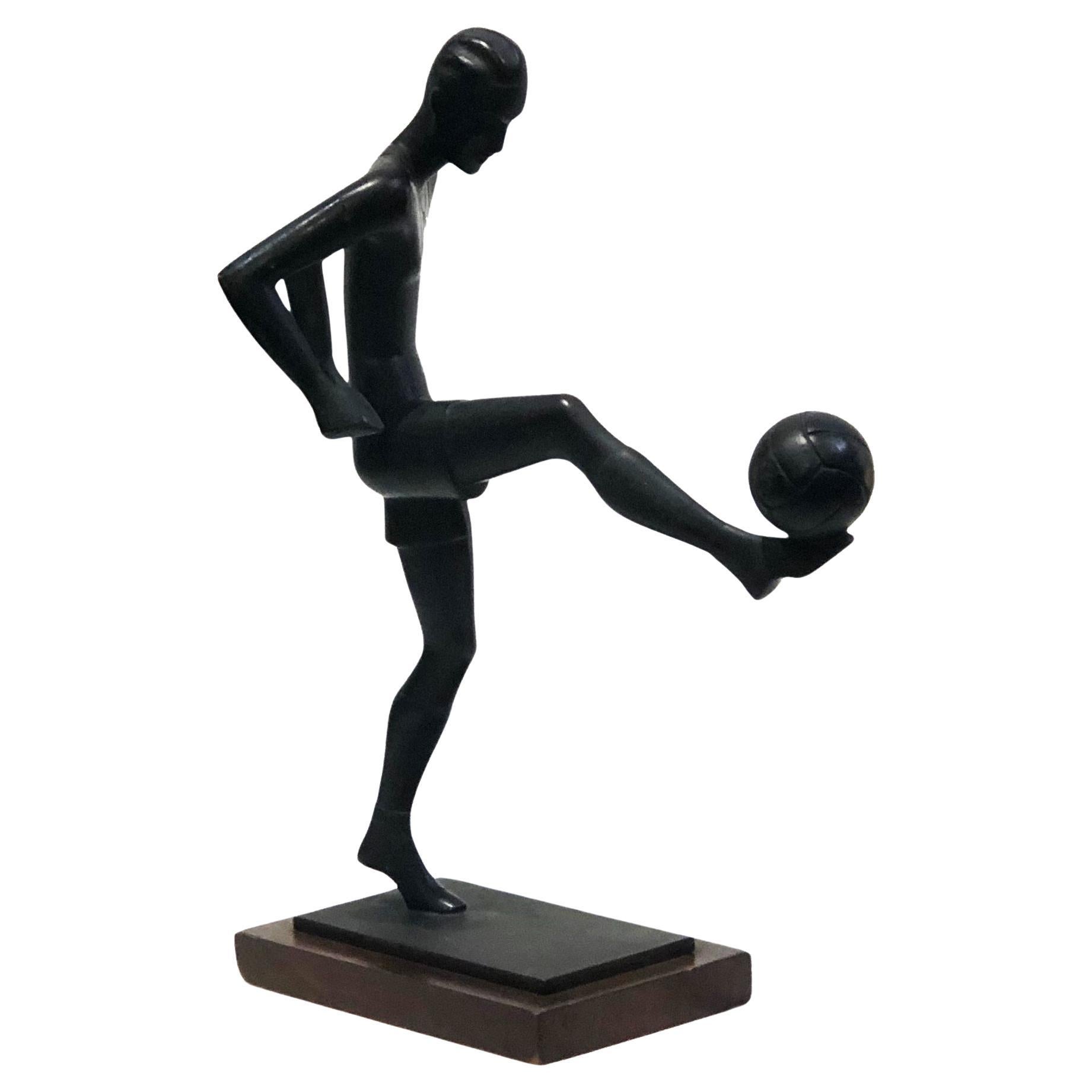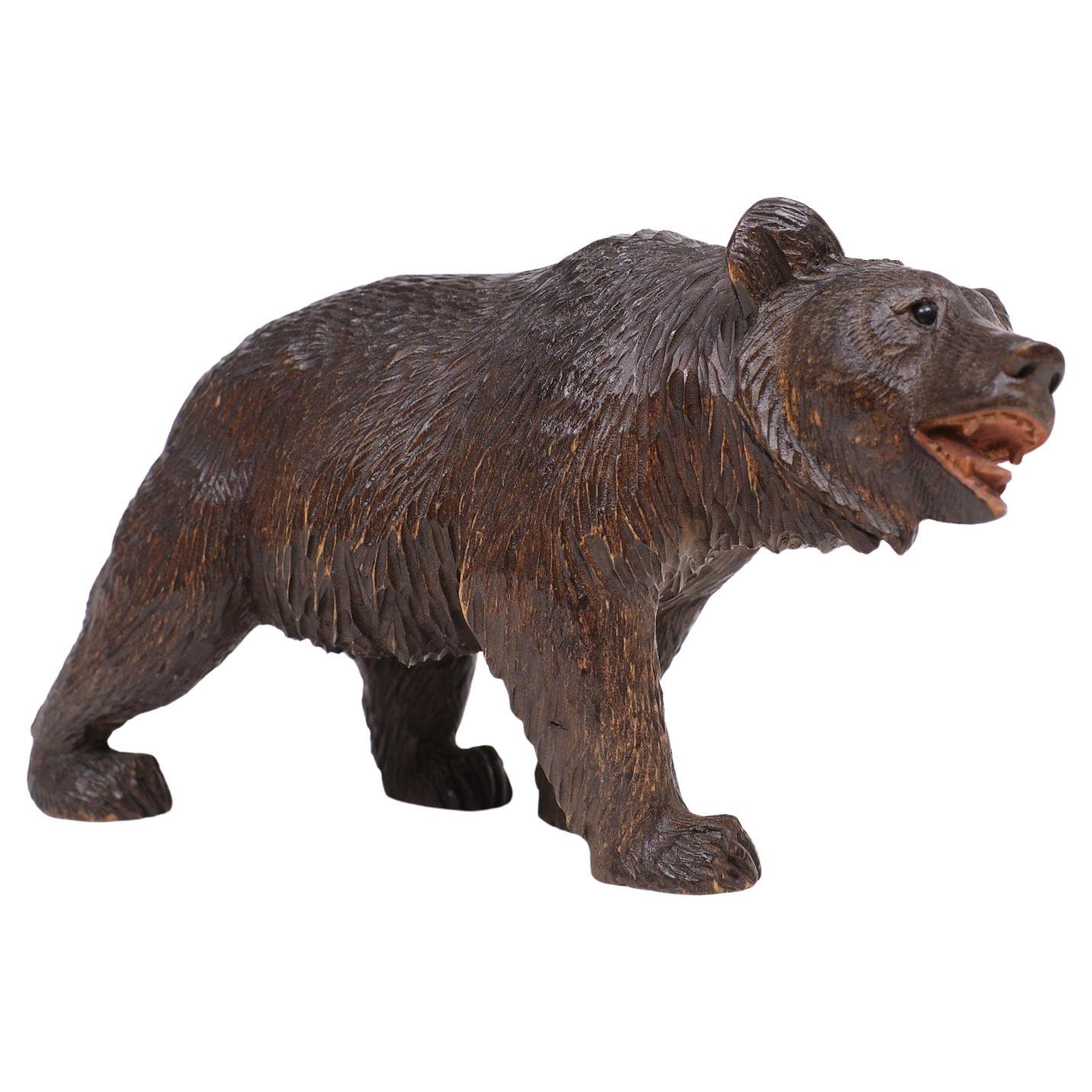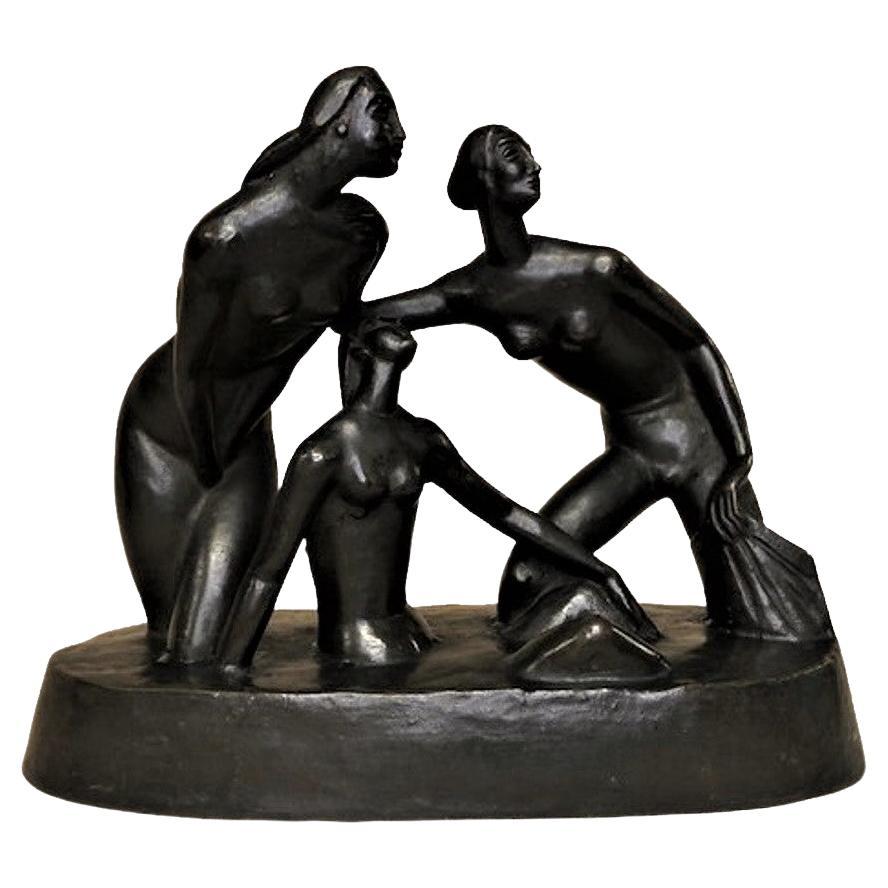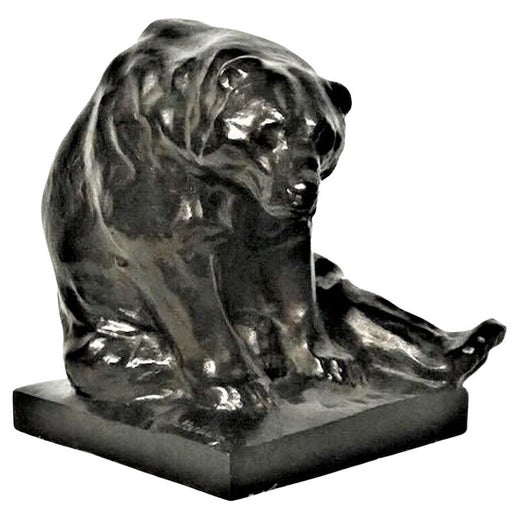Joseph Franz Pallenberg, Bear, German Patinated Bronze Sculpture, ca. 1920s
About the Item
- Creator:Joseph Franz Pallenberg (Sculptor)
- Dimensions:Height: 8 in (20.32 cm)Width: 7.5 in (19.05 cm)Depth: 8.5 in (21.59 cm)
- Style:Art Deco (Of the Period)
- Materials and Techniques:Bronze,Patinated
- Place of Origin:
- Period:
- Date of Manufacture:circa 1920s
- Condition:Wear consistent with age and use. We make our best effort to provide a fair and descriptive condition report. Please examine photos attentively, as they are part of the description. Send us a message to request more details or discuss price.
- Seller Location:New York, NY
- Reference Number:1stDibs: LU2819324653402
Joseph Franz Pallenberg
Joseph Franz Pallenberg was a German artist and sculptor, born in 1882, in Cologne, Germany. He is well-known as an animal sculptor. He began drawing animals at the age of six years, excited by a visit to the Cologne Zoo. From 1899, he attended the Dusseldorf Art Academy, where he received his first training in drawing, from Ernst Roeber and Willy Spatz. His first significant work, the Sauhatz, was shown in 1902, in Kunstpalast Dusseldorf, as part of the large trade and industrial exhibition. In 1904, Joseph exhibited 16 animal sculptures at the “Great Berlin Art Exhibition”. In 1907, his bronze sculpture, Flying Eagles received a gold medal at the “Great Berlin Art Exhibition”. In his studio, in Cologne, he created the Rominter Runfthirsch, which received the Golden State Medal at the “1907 National Art Exhibition”.
- ShippingRetrieving quote...Ships From: New York, NY
- Return PolicyA return for this item may be initiated within 10 days of delivery.
- Joseph Franz Pallenberg, Bear, German Art Deco Bronze Sculpture, ca. 1920sBy Joseph Franz PallenbergLocated in New York, NYGerman Art Deco Joseph Franz Pallenberg Bear Patinated Bronze ca. 1920’s Signed “Jos. Pallenberg”. Black patina, original black marble base. Dimensions: Height: 8 inches (...Category
Vintage 1920s German Art Deco Animal Sculptures
MaterialsBronze
- Italian Art Deco, Equestrian Groom, Patinated Bronze Sculpture, 1920sLocated in New York, NYSigned on the base: “DITA”. Impressed foundry stamp.Category
Vintage 1920s Italian Art Deco Figurative Sculptures
MaterialsBronze
- Soccer Player, German Art Deco Patinated Bronze Sculpture, ca. 1930’sLocated in New York, NYArt Deco Soccer Player Patinated Bronze Sculpture Germany, ca. 1930’s DIMENSIONS Height: 9.5 inches Width: 6.75 inches Depth: 2.75 inches ABOUT A rare, laconi...Category
Vintage 1930s German Art Deco Figurative Sculptures
MaterialsBronze
- Richard Bauroth, Bathers, German Jugenstil Patinated Bronze Sculpture, Ca. 1919Located in New York, NYABOUT ARTIST Richard Bauroth (German, 1884-?) was active/lived in Germany. German sculptor, Richard Bauroth studied in Munich et al. under Adolf von Hildebrand. DIMENSIONS Heigh...Category
Vintage 1910s German Jugendstil Figurative Sculptures
MaterialsBronze
- Fall of Eve, Art Deco Multi-Color Patinated Bronze Sculpture, ca. 1920Located in New York, NYBearing a clear aesthetic influence of the Art Deco era, this wonderfully beautiful image of the progenitor Eve is a Western-European school sculptural portrait of a stunningly beaut...Category
Vintage 1920s French Art Deco Figurative Sculptures
MaterialsBronze
- Ernst Seger, David and Lion, German Art Deco Patinated Bronze Sculpture, c. 1920By Ernst SegerLocated in New York, NYSigned “E. Seger”. Black patina. Dimensions Height: 8 inches (20cm) Width: 7.5 inches (18.75cm) Depth: 8.5 inches (21.25cm) THE BIBLE STORY Samuel 17:34-36 Originally, Saul would not allow David to fight Goliath (17:33). Saul’s reason was simply that Goliath would be stronger than David. David was young and he did not have the experience to fight such a capable enemy as Goliath. David was likely to die, and his death would benefit nobody. Often people wrongly imagine that they are acting in faith (in other words, that they are trusting God). Really, they are acting in a foolish manner, as if the danger is not real. They are not trusting in God, but in their own thoughts, hopes and desires. David’s reply to Saul shows us his attitudes. This reply explains clearly why David had offered to fight Goliath. In other words, it shows how David considered himself able to defeat Goliath. Like many boys and young men in Israel, David had worked as a shepherd. That is, he looked after sheep. He was responsible to look after those sheep in every way. In particular, he had to protect them from wild animals. Lions and bears are some of the fiercest large wild animals. They were common in Israel at the time of the Bible. They are much stronger than a man (see for example 1 Kings 13:24 and 2 Kings 2:24). Only the bravest and strongest men were able to kill a lion (Judges 14:5-6; 2 Samuel 23:20). However, David had killed both a lion and a bear. He had killed animals that were stronger than him. David did not believe that the strongest man would win the fight. David had a close relationship with God; he was trusting God to rescue him (17:37). David was not pretending that there was no danger. However, God’s Holy Spirit was active in David’s life (16:13). By the power of his Holy Spirit, God had given David the faith (trust in God) to fight Goliath. Because David really was trusting God, there was no reason for him to be afraid of Goliath. THE ARTIST Ernst Seger (1865 1939), born in Neurode (Nowa Ruda, now Poland), studied sculpturing from 1884 at the Kunstschule in Breslau under Robert Härtel. From 1886 he worked in the Atelier of Christian Behrens, where he created the Eichendorff-Memorial for the Silezian City of Neisse. From 1893 to 1894 Seger stayed in Paris where he worked in the atelier of Auguste Rodin. However, Seger finally chose a ‘Jugenstill’ and a more ‘naturalistic’ or ‘Neuklassizismus’ style. His sculptures, modelled like the Greek antiques, were later greatly admired by the National Socialists. At the end of 1894 Ernst Seger went back to Berlin, founded his own atelier and created the Kaiser Wilhelm I memorial for the Silesian City of Glatz. In 1897 Seger created the sculpture ‘Jugend’ (‘Youth’), which was displayed at the ‘Große Berliner Kunstausstellung’ in 1898, at the ‘Große Berliner Kunstausstellung’ in 1899, at the ‘Münchener Glaspalast Ausstellung’ in 1899 and at the ‘Münchener Glaspalast Ausstellung’ in 1908. As a sculptor Seger regarded this as his first relevant work, his breakthrough. A copy of the sculpture in bronze, 1.60 metres high, was placed in the ‘Scheitniger Park’ in Breslau (now Wroclaw). In 1898 Segers ‘Diana’, the Roman Goddess of the Hunt, the Moon and Childbirth, was unvealed in Park Szczytnicki, Breslau, Polen (earlier ‘Schneitniger Park’). Until 1945 the sculpture stayed in the Schneitniger Park, Breslau. This part of the park is still called ’Dianagarten’. After the turn of the century the elegant female dancers and nudes by Seger gained great popularity. In 1905 Ernst Seger created -together with the sculptor Bernhard Sehring- the ‘Bismarck Brunnen’ (‘Bismarck Fountain’) in Breslau. This memorial-fountain (which still exists) represents the allegories ‘Kampf’ and ‘Sieg’ (‘Battle and Victory’). Seger’s ‘Verwundete Amazone’ (‘Wounded Amazon’), displayed at the Grosse Münchner Kunstausstellung in the Glaspalast in 1908, was placed in the garden of the ‘Kaufhauses Wertheim’ in Berlin. In the same year he was appointed as a professor. Seger’s marble sculpture ‘Kypris’, created in 1916, was placed in the Alten Nationalgalerie in Berlin. In 1925 the City of Berlin acquired his sculpture ‘Anbetung’ and placed it at the Johannaplatz. ‘Storchenbrunnen’ (‘Stork-fountain’), was placed in 1931 at the Adolf-Scheidt-Platz in Berlin. In 1935 the American newspaper publisher William Randolph Hearst bought Seger’s sleeping ‘Ganymede’. During the Third Reich Ernst Seger was commissioned numerous Hitler busts...Category
Vintage 1920s German Art Deco Figurative Sculptures
MaterialsBronze
- Franz Hagenauer, Violinist Sculpture, 1920s, Silvered Bronze & WoodBy Werkstätte Hagenauer WienLocated in BARCELONA, ESStep into the enchanting world of the 1920s with Franz Hagenauer's Violinist Sculpture—a symphony of artistic brilliance. Crafted from silvered bronze and wood, this masterpiece embo...Category
Vintage 1920s Austrian Art Deco Figurative Sculptures
MaterialsBronze
- Black Forest glass eye Bear 1920s Germany .Located in Den Haag, NLVery nice Hand carved Black Forest Wooden Bear ,Glass Eyes ,Category
Vintage 1910s German Black Forest Animal Sculptures
MaterialsFruitwood
- 1920s Italian Signed Bronze SculptureBy Elisabetta Mayo D’AloisioLocated in Roma, ITBronze on a marble base It bears Mayo's signature. Trademark Fondart - Lagana Napoli. “Of the first sculpture, a group of highly vigorous original artistry, all that remains is Ada...Category
Early 20th Century Italian Art Deco Figurative Sculptures
MaterialsMarble, Bronze
- Hand-Carved Fruitwood Black Forest Bear Germany, 1920sLocated in Amsterdam, NLStunning and rare Black Forest bear. Striking German design from the 1920s. Hand-carved fruitwood sculpture of a life-like bear walking on all four paws. Rare because of the hand-...Category
Vintage 1920s German Black Forest Animal Sculptures
MaterialsFruitwood
- Antique Hand Carved Black Forest Bear 1920s GermanyLocated in Den Haag, NLVery nice black forest bear. Hand carved 1920s. Good condition.Category
Vintage 1920s German Black Forest Animal Sculptures
MaterialsFruitwood
- A Wooden Carved Black Forest Bear with Bowl ca. 1920sLocated in Berghuelen, DEA Wooden Carved Black Forest Bear with Bowl ca. 1920s Item e7283 A nicely carved Black Forest bear desk set with bowl for small utensils. Executed in Brienz, Switzerland around 1920....Category
Early 20th Century Swiss Black Forest Animal Sculptures
MaterialsWood
